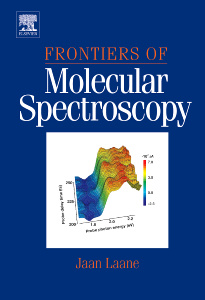Description
Frontiers of Molecular Spectroscopy
Language: English
Subjects for Frontiers of Molecular Spectroscopy:
740 p. · Hardback
Description
/li>Contents
/li>Readership
/li>Biography
/li>Comment
/li>
Following a year at Tufts University, Jaan moved to Texas A&M University where he soon was promoted to Full Professor (1976). His research focused on the determination of vibrational potential energy surfaces in both ground and excited electronic states. He has contributed to the theoretical understanding of molecular vibrations and structures and to the experimental methodology in these areas. He has more than 300 publications and three books. He has been in the forefront of writing computer programs for analyzing potential energy surfaces. These have been widely distributed and utilized. Laane has supervised the research of more than 40 Ph.D. students, 60 undergraduates, and dozens of post-docs and visiting professors. He has received the Humboldt Award, a Texas A&M teaching award and the Lippincott Award among others. He was Chair of the Physical and Nuclear Chemistry Division for many years and Associate Dean of Science and Speaker of the Faculty Senate. Since 1994, Laane has been Editor for the Journal of Molecular Structure.
- Provides comprehensive coverage of present spectroscopic investigations
- Features 20 chapters written by leading researchers in the field
- Covers the important role of molecular spectroscopy in research concerned with chemistry, physics, and biology




